Thousands of lives are being lost every year due to IEDs (improvise explosive devices). IEDs were responsible for approximately 63% of coalition deaths in Iraq.

ABSTRACT
Mobile Explosive Containment Vessels (MECV) referred to as Total Containment Vessels (TCV) are fully enclosed vessels used to absorb the explosion forces the enclosure is spherical and made of high-strength steel from 25mm to 40mm. which increases too much weight. The efforts in this project are to reduce the metal thickness of a mobile explosive containment vehicle (MECV) by filling it with a non-Newtonian fluid which could reduce overall weight, absorb the impact force, reduce the manufacturing cost. A comparison was made for the metal container vs plastic container filled with partial and full non- Newtonian fluid for the same blast impact load. Live data readings were recorded using force sensors and the data was analyzed using scientific methods.
KEYWORDS: MECV, TCV, vessel, non-
Newtonian, sensor,
INTRODUCTION
Thousands of lives are being lost every year due to IEDs (improvise explosive device). IEDs were responsible for approximately 63% of manual ignition. Not every IED can be electronically diffuse but involves a great risk of touch explosion. so here comes the into play (MECV) Mobile Explosive Containment Vessels.
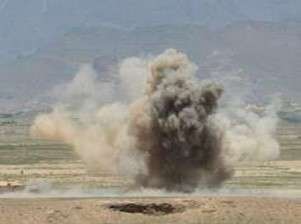
GENERAL CALCULATIONS
Before the experiment is carried out environmental parameters are collected which would be used further for the design calculation. material data and specifications are collected. Generally, the sutli bomb contains 25 grams gun powder having 3 Mega Joules of energy per 1 kg that equals 3000 joules per 1 gram. By using Brodes equation we can estimate pressure of explosion.
2 KNO3 + S + 3 C → K2S + N2 + 3 CO2.
Atmospheric pressure (p ) = 1.01 bar
1
Chamber pressure (p2) = ?
Volume of container = 0.003 m3 (cooker 3lts)

P2 = 101 bars, P2 = 102 kg/cm2 for 0.005 sec
using brodes, equation, we can see the effect of pressure (p2) based on different container volume
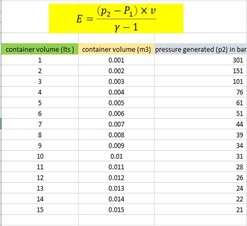

Considering three different samples. Sample A stainless steel (cooker), sample B polypropylene (pp) cylinder + half-filled Newtonian fluid, sample
C polypropylene (pp) cylinder + full-filled Newtonian fluid are subjected to the sutli bomb explosion force and the stress values are calculated using the force sensors connected to the Arduino uno.
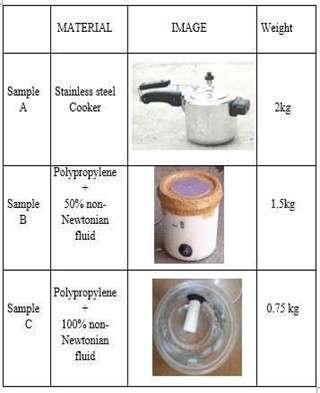
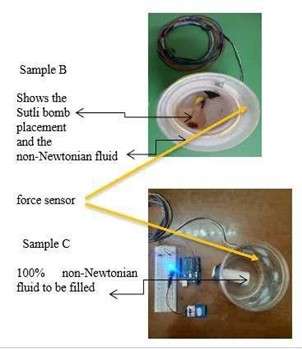
EXPERIMENTATION
Three different samples are subjected to the explosion as follows and the results are tabulated the numerical values are obtained from force sensor connected to Arduino.
table .3 shows the explosion impact on sample A, B, C as follows.
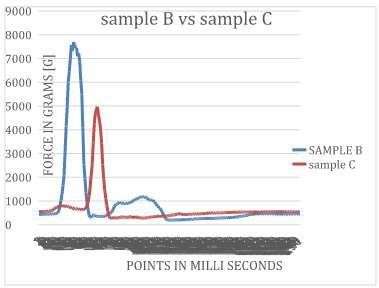
OBSERVATIONS FROM THE EXPLOSION TESTS CONDUCTED
After the explosion test for the sample A, B, C the readings were imported from the Auridon to the excel for sample B, sample C and the line graph was plotted for 246 data points vs force[F] in grams. For a span of 30 seconds. the sample B line is shown in blue and sample C line is shown in orange.
CONCLUSION
After observing the explosion images and the graph analysis we conclude that the sample A which is stainless steel pressure cooker could not with stand the explosion pressure. For the sample B consisting of 50 % non – Newtonian fluid we see that the explosion force could be supress but not completely and the container lid got exploded. the last sample C containing full non-Newtonian fluid the explosion forces could be absorbed. And the blast pressure did not destroy the containers lid. This conclusion is from the graph where we observe a difference of 2000 grams of force comparing the sample B and sample C. and weight is reduce by 1 kg 25 gm as comparing sample C with sample A.
Video
Source: Disposing IED using Non Newtonian Fluid
